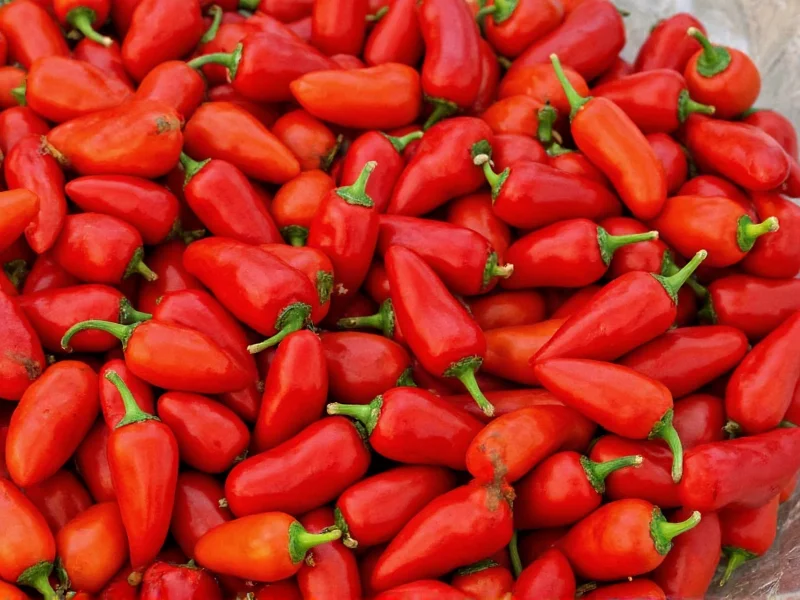Understanding what peppers make paprika reveals the fascinating agricultural and culinary journey behind this vibrant spice. While many assume paprika comes from a single pepper variety, it's actually produced from multiple types of Capsicum annuum peppers, each contributing unique characteristics to the final product. This comprehensive guide explores the specific peppers used globally to create different paprika varieties, their growing conditions, and how they impact flavor profiles.
The Primary Pepper Family Behind Paprika
All authentic paprika originates from the Capsicum annuum species, which includes bell peppers, wax peppers, and many other cultivars. Unlike cayenne or habanero peppers that belong to different Capsicum species, paprika-producing peppers share genetic similarities but have been selectively bred for specific qualities like color intensity, sweetness, and thickness of flesh.
Hungarian Sweet Paprika Peppers
Hungary, considered the spiritual home of paprika, cultivates specific pepper varieties known as Kurri, Fehérő, and Erdős. These long, conical peppers measure between 2-4 on the Scoville scale, making them virtually heat-free. The most prized variety, Kalocsai, produces deep red peppers with exceptionally high carotenoid content, yielding paprika with intense color and sweet, fruity notes. Hungarian growers typically harvest these peppers when fully ripe for maximum color development.
| Paprika Type | Pepper Variety | Heat Level (Scoville) | Primary Growing Region |
|---|---|---|---|
| Sweet Hungarian | Kurri, Fehérő, Kalocsai | 0-150 | Hungary (Szeged, Kalocsa) |
| Hot Hungarian | Erdős | 500-1,000 | Hungary |
| Spanish Sweet Pimentón | Bola, Ñora | 100-250 | La Vera, Spain |
| Spanish Smoked Pimentón | Jíjona, Jaranda | 100-500 | La Vera, Spain |
| American Paprika | California Wonder, Hungarian wax | 0-500 | California, USA |
Spanish Pimentón Peppers
Spain's distinctive paprika, called Pimentón, comes from specific regional peppers grown in Extremadura. The Bola and Ñora varieties produce round, thick-walled peppers ideal for drying. What makes Spanish paprika unique is the smoking process: peppers are dried over oak fires in special smokehouses called secaderos for up to 15 days. This traditional method creates Pimentón de la Vera, available in sweet (dulce), bittersweet (agridulce), and hot (picante) varieties. The smoking process fundamentally transforms the pepper's chemical composition, creating complex flavor compounds not found in other paprikas.
Hot Paprika Pepper Varieties
For hot paprika, producers use varieties with higher capsaicin content while still maintaining the Capsicum annuum classification. The Hungarian Erdős pepper and certain cayenne varieties produce paprika with noticeable heat. These peppers typically measure between 500-1,000 Scoville units when fresh, translating to a moderately spicy powder. Unlike cayenne pepper powder which comes from Capsicum annuum var. grossum, hot paprika maintains the characteristic sweet undertones of traditional paprika while adding heat.
American and Global Paprika Peppers
In the United States, paprika production primarily uses hybrid varieties like California Wonder bell peppers and Hungarian wax peppers. These grow well in California's climate and produce consistent color and flavor. Some specialty producers experiment with heirloom varieties like Choricero peppers to create unique paprika blends. The key difference in American paprika production is the drying method—most use mechanical dryers rather than traditional sun-drying or smoking, resulting in a milder, more uniform product.
The Paprika Production Process
The transformation from pepper to paprika involves precise steps that affect the final product's quality. After harvesting at peak ripeness, peppers undergo:
- Drying: Traditional methods use sun-drying on mats (Hungary) or smoking over oak (Spain), while modern producers use temperature-controlled dryers
- Stemming and seeding: Removing stems and seeds prevents bitterness in the final product
- Grinding: Stone grinding preserves flavor compounds better than high-speed mills
- Sifting: Multiple passes through fine sieves create uniform powder texture
- Storage: Properly stored in dark, airtight containers to preserve color and flavor
How Pepper Selection Affects Paprika Quality
The specific pepper variety directly impacts several critical characteristics of paprika:
- Color intensity: Determined by carotenoid content, with Hungarian Kalocsai peppers producing the deepest red
- Flavor profile: Sweet varieties have higher sugar content, while hot varieties contain more capsaicinoids
- Shelf stability: Peppers with thicker flesh and higher oil content create more stable paprika
- Nutritional value: Vitamin C and antioxidant levels vary significantly between pepper varieties
Common Misconceptions About Paprika Peppers
Several myths persist about paprika production. Contrary to popular belief, paprika never comes from Capsicum chinense peppers like habaneros. Additionally, while some low-quality products might mix in other spices, authentic paprika contains only ground peppers. The color difference between Hungarian and Spanish paprika stems from both pepper variety and processing method—not artificial coloring as some assume.
Selecting Quality Paprika Based on Pepper Origin
When shopping for paprika, understanding the pepper source helps ensure quality. Look for specific regional designations like Pimentón de la Vera (Spain) or Kalocsai fűszerpaprika (Hungary), which guarantee authentic production methods. Avoid products listing "spice blend" or "with other natural flavors" as these often contain fillers. The finest paprikas display vibrant color, rich aroma, and originate from single-source peppers rather than generic "red peppers."











 浙公网安备
33010002000092号
浙公网安备
33010002000092号 浙B2-20120091-4
浙B2-20120091-4